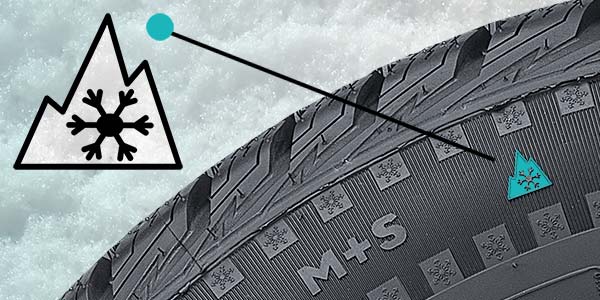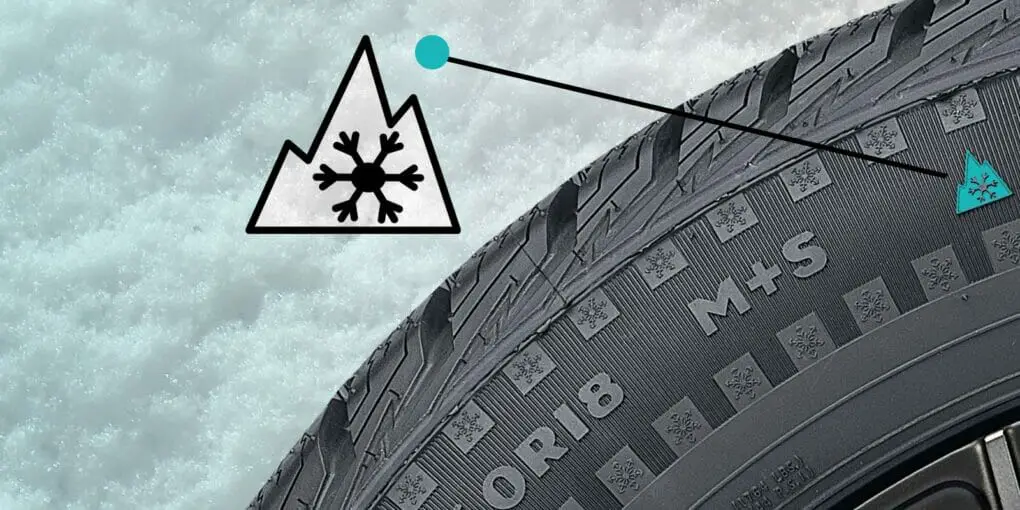How to Pick Snow Tires
If you live in an area where it snows, you know that having the right tires can make all the difference. Snow tires provide better traction and stability in winter conditions, so they’re a must if you want to stay safe on the road. But with so many different types and brands of snow tires on the market, how do you choose the right ones for your car?
Here’s a quick guide to help you pick the best snow tires for your needs.
- Picking the right snow tires for your car or truck can mean the difference between getting stuck in a blizzard and making it to your destination safely
- Here are a few things to keep in mind when choosing snow tires:1
- Consider the type of vehicle you drive
- Passenger cars, SUVs, and light trucks all require different types of snow tires
- Make sure to pick tires that are specifically designed for your type of vehicle
- Think about the conditions you’ll be driving in most often
- If you live in an area with mostly light snowfall, you might be able to get away with all-season tires that have some extra tread for traction in winter weather
- But if you’re regularly driving in deep snow or on icy roads, you’ll need dedicated winter tires with special tread patterns and compound formulations for maximum grip
- Choose a tire size that’s appropriate for your vehicle and driving needs
- Larger tires provide more stability and traction but can also make your car or truck harder to handle on dry roads; smaller tires may improve fuel economy but could leave you slipping and sliding in snowy conditions
- Talk to a tire expert at a reputable dealership or automotive service center to find out what size is right for you
How to Choose Winter Tires (4 Steps)
Studded Snow Tires
As the weather gets colder and the snow begins to fall, it’s time to start thinking about switching out your tires. If you live in an area with a lot of snow and ice, studded snow tires are a must. Studded tires have metal studs embedded in the tread that provide extra traction on slippery surfaces.
They can make a big difference when it comes to safety, so if you’re unsure about whether or not to make the switch, here are a few things to consider.The pros of studded snow tires are that they provide much better traction than regular tires, especially on icy roads. They can help you avoid accidents and keep you safe while driving in winter weather conditions.
The cons of studded tires are that they can damage pavement and they’re also more expensive than regular tires.If you’re still undecided, it’s important to weigh the pros and cons carefully before making a decision. Ultimately, the choice is up to you and what you feel comfortable with.
If you do decide to go with studded snow tires, be sure to have them installed by a professional so they’re properly seated and ready for action!

Credit: www.lesschwab.com
How Do I Know What Winter Tires to Get?
If you live in an area with cold winters and snowy roads, then you need to make sure your car is equipped with the right tires. Winter tires are designed to provide better traction and handling in winter conditions. But how do you know what winter tires to get?
There are a few things to consider when choosing winter tires. First, you need to decide between all-season and winter-specific tires. All-season tires are a good option if you don’t experience extreme winter conditions.
They provide good traction in most weather conditions, but they may not perform as well as winter-specific tires in very cold temperatures or on icy roads.Winter-specific tires, on the other hand, are designed specifically for use in cold temperatures and on snowy or icy roads. They usually have a deeper tread depth than all-season tires, which helps them grip the road better in slippery conditions.
They may also have special tread patterns or compounds that help them grip the road better inwinter conditions.Once you’ve decided between all-season and winter-specific tires, then you need to choose the right size tire for your car. You can usually find this information in your car’s owner’s manual or on the doorjamb of your car (look for a sticker that says “tire size”).
Once you know the right size tire for your car, then you can start shopping around for specific brands and models of tire that fit your needs.When shopping for winter tires, pay attention to the tread depth and pattern. A deeper tread depth will help the tire grip snow and ice better.
A Tire with a symmetrical tread pattern (one that looks like it was cut down the middle) will typically provide better handling than one with an asymmetrical tread pattern (one that has different sizes/shapes of blocks on each side). Finally, look for a tire that is ratedfor “M+S” use–this means it is approved bythe Rubber Manufacturer’s Associationfor usein Mud + Snow environments (iowinter conditions).
What Kind of Tires Should I Get for Snow?
There are a few things to consider when purchasing tires for snow. First, you’ll want to make sure the tires you select are rated for winter driving. All-season tires may be fine for light snow, but if you live in an area with heavy snowfall, you’ll need winter tires.
Winter tires have special tread patterns and rubber compounds that provide better traction on icy and snowy roads. They can also handle lower temperatures without hardening and cracking.Next, you’ll need to decide what type of tire is best for your vehicle.
If you have a four-wheel drive vehicle, you may be able to get by with all-terrain tires. These provide good traction in both off-road and on-road conditions. However, if you have a two-wheel drive car or truck, you’ll likely need dedicated snow tires.
Snow tires have deeper treads than all-terrain tires and are specifically designed for use in snowy and icy conditions.Finally, keep in mind that while wider tyres may offer more grip, they can also reduce fuel economy and increase braking distances. So it’s important to strike a balance between width and fuel efficiency when selecting your winter tyres.
If you’re not sure what kind of tire is best for your vehicle or driving conditions, consult with a local tyre dealer or auto mechanic. They can help you select the right tyre for your needs and ensure that it’s properly installed on your vehicle.
Do You Go down a Size for Winter Tires?
If you’re considering switching to winter tires, you may be wondering if you need to get a smaller size. The short answer is no – you can stick with the same size tires that you use in the summer.There are a few reasons why people might think they need to downsize their tires for winter.
One is that snow and ice can make your car feel heavier, so a smaller tire might help with traction and control. Another reason is that colder temperatures can cause tire pressure to drop, so using a smaller tire could help keep your car stable.Ultimately, though, it’s not necessary to switch to a smaller size tire for winter.
If you’re happy with the performance of your current tires in summer weather, they’ll likely work just fine in winter, too. Of course, if you’re not sure or you have any concerns, it’s always best to consult with a professional before making any changes to your car.
Do I Need All 4 Snow Tires?
Yes, you need all four snow tires. It’s a common misconception that you only need two snow tires, but this is not the case. Two snow tires will not provide enough traction and could actually be dangerous.
All four tires need to be the same size and have the same tread pattern in order for them to work together properly.
Conclusion
When the snow begins to fall, it’s time to start thinking about getting your car ready for winter weather. One important step is to replace your regular tires with snow tires. But how do you know which snow tires are right for your vehicle?
Here are a few things to keep in mind when picking snow tires:1. Consider the type of vehicle you have. For example, if you have a four-wheel drive vehicle, you may not need as much traction as someone who has a two-wheel drive car.
2. Think about the conditions you’ll be driving in most often. If you live in an area with lots of hills and ice, you’ll need different tires than someone who only has to deal with occasional light snowfall.3. Make sure to get the right size tire for your car or truck.
You can find this information in your owner’s manual or by checking the placard on the inside of your doorjamb.Once you’ve considered these factors, it’s time to start shopping around for tires!


